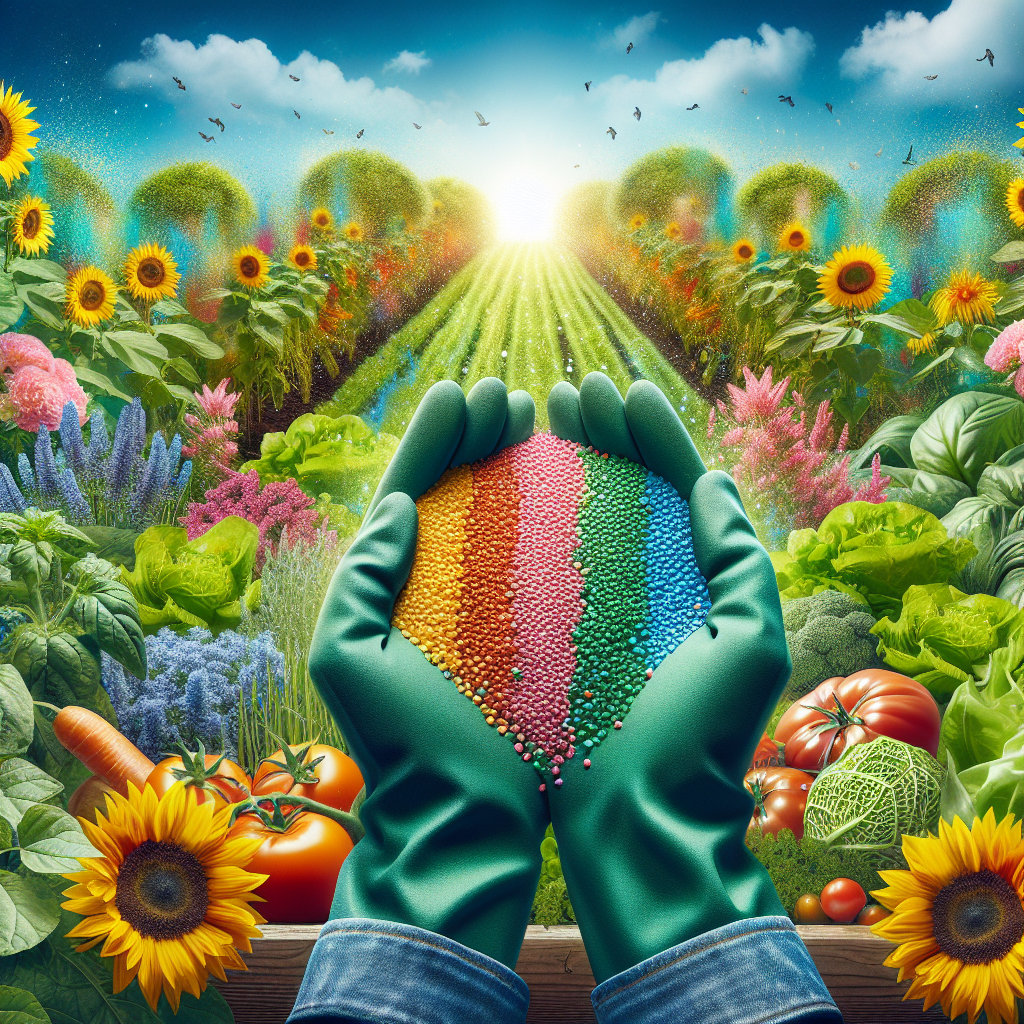How to Choose the Right Fertilizer for Your Garden
Welcome to the green-fingered world where the vitality of your plants is akin to choosing the right ingredients for a five-star meal. We often find ourselves puzzled in front of an array of fertilizer bags, each promising lush growth and bountiful yields. But fret not, by the end of this post, you’ll know exactly what to reach for to nourish your precious greenery.
Understand Your Soil
Before embarking on the quest for the perfect fertilizer, you must first understand the foundation – the soil in your garden. The soil is a living, breathing entity that varies in type, pH level, and nutrient profile. A soil test can reveal much about your garden’s needs, and kits are widely available at garden centers or online – like this one from MySoil. After all, how can you know what to add if you don’t know what’s missing?
N-P-K Ratios: The Holy Trinity of Fertilizer
The three numbers on a fertilizer bag (e.g., 10-10-10) are not just there for show. They represent the percentages of nitrogen (N), phosphorus (P), and potassium (K) – the primary macronutrients your plants crave.
Nitrogen is essential for leafy growth, phosphorus for root and flower development, and potassium for overall health and disease resistance. But don’t go applying a high-nitrogen fertilizer willy-nilly; excessive use can lead to rapid growth with weak structure.
Synthetic vs. Organic Fertilizers
The difference between synthetic and organic fertilizers is not only in their origin but also in how they work. Synthetics are fast-acting, giving your plants a quick nutrient boost, yet they do little to improve soil texture or microbiology.
Organics, on the other hand, release nutrients slowly as they break down, feeding your soil as much as your plants. They improve soil structure, enabling better root growth and water retention. Organic options, like those from Espoma Organic, can be a fantastic choice for the environmentally conscious gardener.
Specialized Fertilizers for Specific Plants
Some plants have particular nutritional demands. Acid-loving plants, such as azaleas and blueberries, benefit from specially formulated fertilizers that lower soil pH. Meanwhile, vegetables and tomatoes might prefer a fertilizer tailored to support fruiting and flowering.
Timing and Application are Key
Over-fertilizing can be just as detrimental as under-fertilizing. Generally, a good rule of thumb is to fertilize in the growing season, when plants are actively taking up nutrients. Slow-release formulas can reduce the application frequency, making your job easier and diminishing the risk of over-application.
Liquid Fertilizers for a Quick Fix
Sometimes your plants might show signs of deficiency that need a quick remedy. Liquid fertilizers act rapidly, and they’re particularly suited for this purpose. They aren’t a long-term solution, but they can help rescue a plant from the brink.
Environmental Considerations
As gardeners, we are stewards of the land, and our choices have impacts beyond our garden’s borders. Runoff from over-fertilization can cause algae blooms in nearby water bodies, which is why it’s important to follow recommended application rates and consider environmentally-friendly products whenever possible.
The Verdict on Fertilizers
The “right” fertilizer is not a one-size-fits-all answer. It’s about tuning into your garden’s unique profile and the specific needs of your plants. Here’s a quick checklist to guide your selection:
- Conduct a Soil Test: Knowing your soil’s starting point is crucial.
- Consider the N-P-K Ratio: Select a blend that matches your plants’ needs.
- Synthetic or Organic?: Decide based on how immediate the needs are and your stance on environmental impact.
- Look for Specialized Formulas: If you have plants with unique needs, cater to them.
- Mindful Timing: Fertilize when plants can most benefit from added nutrients.
- Option for Liquids: For urgent nutrient needs, consider a liquid formula.
- Think of the Environment: Lower your ecological footprint with responsible fertilizer use.
Gardening is an art that harmonizes with the science of horticulture. The right fertilizer acts as a maestro conducting a symphony, orchestrating the vibrant dance of growth, bloom, and harvest in your garden. Take the time to choose wisely, for your plants, and our planet.
Remember, every garden is distinct, much like a fingerprint, and once you’ve figured out exactly what works in your slice of paradise, the mystery of the fertilizer aisle will dissipate like morning mist over a well-tended lawn.
Embrace the journey, for gardening is, after all, a lifelong learning experience.
Happy gardening!
For further reading on gardening and outdoor topics, consider checking out information-rich, authoritative sources like the Royal Horticultural Society or Gardeners’ World. Whether you’re a beginner or a seasoned green thumb, these resources can help solidify your knowledge base and refresh your approach to garden care.

